
© Alice Blangero. (Click image for larger version)
Les Ballets de Monte Carlo
The Taming of the Shrew (La Mégère Apprivoisée)
★★★★✰
Monte-Carlo, Salle Prince Pierre – Grimaldi Forum
4 January 2018
www.balletsdemontecarlo.com
www.grimaldiforum.com
The significant highlight of the Bolshoi’s London season, back in the summer of 2016, came with the production of Jean-Christophe Maillot’s The Taming of the Shrew, which was made on the Moscow company, two years’ earlier. Now, at last, Maillot has been able to translate this popular work – nominated by the UK critics for Best Classical Choreography in last year’s National Dance Awards – onto his own dancers at Les Ballets de Monte Carlo, a company that impresses all the more at each new viewing.
The transition from Moscow to Monte Carlo has been lock, stock but with a different barrel, since Maillot has taken the opportunity to refurbish the parts that he felt needed amendment from the helter-skelter, creative rush towards that 2014 premiere; and, although, this production would be familiar to any who saw the Bolshoi’s performances, it contains several revisions, notably at the beginning of the second act.

© Alice Blangero. (Click image for larger version)
Maillot had a difficult double act to follow: firstly, in translating a 16th century comedy about domestic violence into something that is acceptable to today’s #MeToo sensibilities; and, secondly, in following the seminal production, choreographed by the late John Cranko, for Stuttgart Ballet, which premiered in 1969. Cranko’s ballet has enjoyed such enduring, global popularity that few choreographers have been tempted to compete with his success over the past fifty years.
Hat’s off, then, to Maillot for taking on the challenge so well, and so differently, both in his original production and subsequently by buffing it up for his own company, where he has been at the helm, since 1993. In this past quarter-of-a-century Maillot has forged a vibrant, global reputation as an inventive choreographer with both a distinctive movement and visual style, building an impressive repertoire that is further enhanced by The Taming of the Shrew. On 3 February 2018, he will receive a thoroughly-merited lifetime achievement award from the Prix de Lausanne.

© Alice Blangero. (Click image for larger version)
He is also a director who does not shy away from tough choices. In his vision, The Taming of the Shrew is both sentimental and challenging, mixing romance, eroticism and misogyny into a rich array of imagery and symbolism. There are clear references to choking, kicking, slapping and even a head-butt and, yet, these abuses are ameliorated by a softer side to the text in well-structured choreography and humour that stays the right side of being uncomfortable.
There is a refreshing lack of hierarchy in Maillot’s company. Dancers are just categorised as Filles and Garçons and that’s it! Ekaterina Petina gave an ebullient and feisty account of the ill-tempered title character, the volatile Katharina; and Matej Urban’s Petruchio was essayed with a coltish charm, exaggerated by loutish drunkenness. Both lead characters are disagreeable from the off and Maillot’s vision is not so much the “taming of the shrew” as it is a mutual softening of two immensely strong personalities; and, on this level, it works very well. Both larger-than-life characters yield to each other in their unusual pathway to love, concluding in an explosion of lust (tastefully covered by a bed sheet). Crucially, the chemistry between Petina and Urban was palpable and made the adventure believable.

© Alice Blangero. (Click image for larger version)
Maillot – as always, assisted by Bernice Coppieters – has further developed the romantic side of Shakespeare’s narrative in the sub-plot of three suitors seeking the hand of Katherina’s more compliant sister, the sweet Bianca (a delightful portrayal by Marianna Barabas). Lucentio (Alexis Oliveira) wins the contest, of course, and Maillot is also true to Shakespeare’s narrative by providing the hapless Hortensio (Benjamin Stone) with the love of a rich widow (Candela Ebbesen); but he goes a matrimony further than the Bard by also providing a wife for the “elderly” Gremio (Lennart Radtke), thus making four newly-married couples at the story’s end.
Maillot’s work is generally replete with a sense of irony and eroticism and Shakespeare gave him enormous scope for both! His production begins with the house lights on and the excellent L’Orchestre Philharmonique de Monte-Carlo warming up, and – as the audience assembles – an eye-catching cameo is already in motion. April Ball is a sexy Governess (La Gouvernante), a character invented by Maillot as the eventual partner for lucky Gremio. She poses provocatively, in front of the closed curtains, cigarette-holder in hand, and lazily invites the audience to applaud the entrance of the conductor (Kalle Kuusava) before stepping behind the opening curtain. This hors d’ouevre of theatrical deconstruction ensured the audience’s attention long before the ballet began.
Ernest Pignon-Ernest is Maillot’s go-to set designer and he has conjured a simple purity of glamour and grandeur with two sweeping, semi-circular staircases that move and divide, clearly representing the search for that perfect “other half”. As well as the elegant evocation of a 30s Hollywood Musical, Pignon-Ernest’s sets suggest an ambiguous sense of place, rather than any literal representation. The costumes – by Augustin Maillot – are modern, colourful and an eclectic mix of demure, practical and sensual.
Maillot has chosen an impressive patchwork of Shostakovich’s music as his composite score, taken from several of the composer’s film scores and symphonies, very effectively co-ordinated to provide an outstanding composition that works as if created directly for the ballet. Familiar music from The Gadfly Suite, the Ninth Symphony and Hamlet is juxtaposed with less well-known extracts from other Soviet films and operettas, ending with the hugely familiar Tahiti Trot, better known as Tea for Two, which Shostakovich orchestrated, from memory, in under an hour to win a bet and later incorporated into his ballet, The Golden Age. This popular music is used for the final scene in which Katherina proves that she is the most obedient wife.
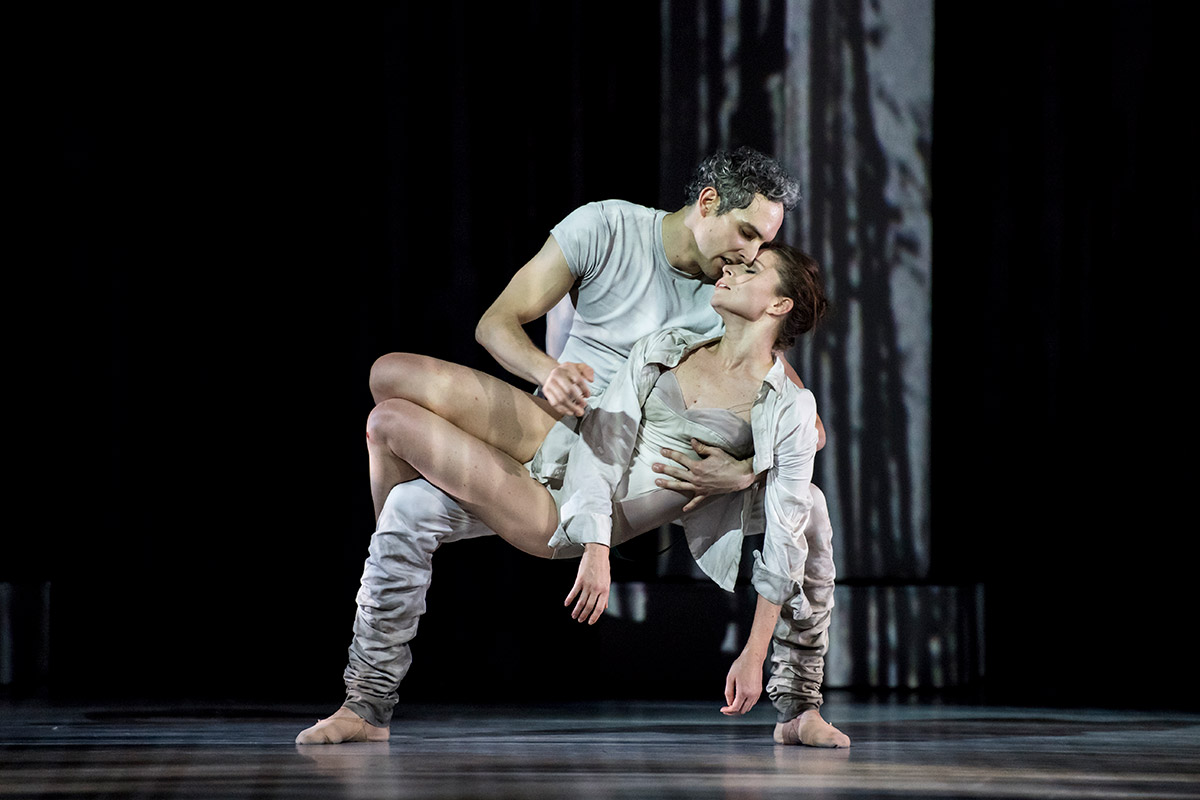
© Alice Blangero. (Click image for larger version)
The production was excellent but it had the added advantage of being performed in a remarkable space. The cavernous 1800-seat theatre with great sight-lines throughout is three floors below ground, thus significantly below the level of the sea, which is just a few metres beyond the theatre’s boundary. A case of extraordinary engineering hosting arresting artistry.








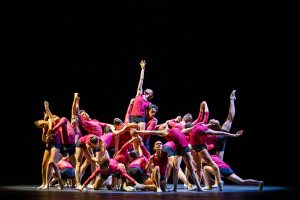

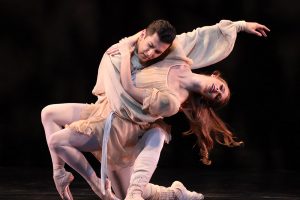
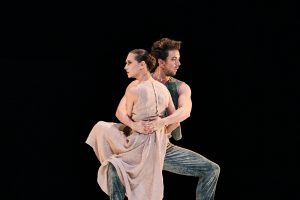
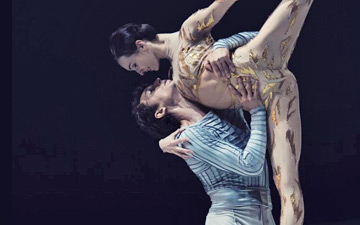
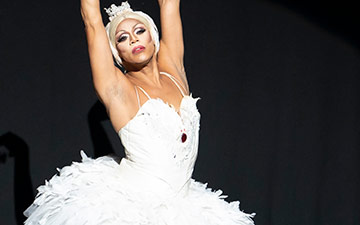
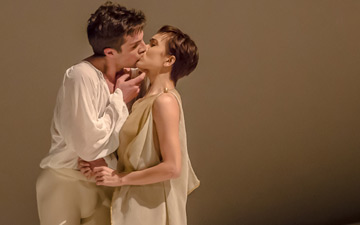
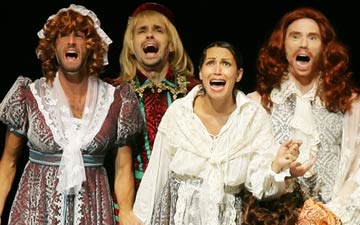
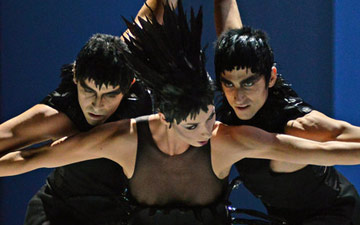
You must be logged in to post a comment.